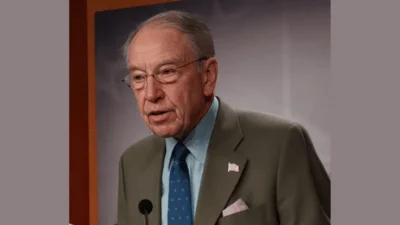The Congressional Record is a unique source of public documentation. It started in 1873, documenting nearly all the major and minor policies being discussed and debated.
“RECOGNIZING THE WORK OF DIANE HEMINWAY: COMMUNITY ENVIRONMENTAL ACTIVIST” mentioning the U.S. Dept of State was published in the Extensions of Remarks section on pages E16-E17 on Jan. 27, 2000.
The publication is reproduced in full below:
RECOGNIZING THE WORK OF DIANE HEMINWAY: COMMUNITY ENVIRONMENTAL
ACTIVIST
______
HON. JOHN J. LaFALCE
of new york
in the house of representatives
Thursday, January 27, 2000
Mr. LaFALCE. Mr. Speaker, I rise today to pay special tribute to an outstanding environmental crusader in my district: Diane Heminway, former Western New York coordinator of the Citizens' Environmental Coalition [CEC]. I commend Diane on her decade of effective, energetic leadership as a community environmental activist on behalf of the people of Orleans County, NY.
In 1984, an accident at a local chemical plant adjacent to her children's school propelled Heminway from homemaker and mother to leader in the grassroots environmental movement in New York State. Overnight, she formed COPE, Citizens Organized to Protect the Environment, to fight toxic pollution and other environmental hazards in her community. In 1990, she broadened the scope of her work, taking the reins of the CEC in Western New York, fighting for clean drinking water, restoration of the Great Lakes, remediation of brownfields and Superfund sites, and greater corporate accountability.
Recently, Diane Heminway resigned her position with the CEC to embark on a new endeavor as a health and safety trainer for the United Steelworkers of America. Though she has left the CEC, Diane will continue to be a tireless advocate for eradicating exposure to toxic chemicals--this time on behalf of America's workers.
I include in the Record an article that appeared in the Rochester Democrat and Chronicle on January 10, 1999, detailing Diane's many accomplishments. On behalf of the residents of Western New York, I extend heartfelt thanks and appreciation to Diane Heminway for her long and continuing commitment to making our community, State, and Nation a cleaner, healthier, and safer place for all of us.
Activist Departs, But Leaves Legacy
Even her foes respect environmental work of Orleans watchdog who targeted Kodak
(By Corydon Ireland)
With the new year comes a new look for area environmental advocates.
Diane Heminway, the Orleans County activist who for years was the chief critic of Eastman Kodak's environmental policies, has resigned her paid role to pursue an interest in workers' rights. For nearly a decade, Heminway was western New York coordinator of the Citizen's Environmental Coalition, a statewide group. The sudden absence of a figure many regard as the godmother of area activists will not leave a void in environmental causes, but it does leave a hole. ``I wish her well in any new endeavor,'' said Judy Braiman, who sought Heminway's help in 1987 when she organized Rochesterians Against the Misuse of Pesticides. ``But in reality, I want her to come back.''
As of December, Heminway became a full-time health and safety trainer for the United Steelworkers of America, which will require frequent national trips away from her Lyndonville, Orleans County, home. ``Workers are the most exposed group to toxic chemicals--and worker-exposure laws are truly inadequate,'' said Heminway. The onetime homemaker and 4-H leader was propelled into action by a 1984 chemical accident, which sent a toxic cloud over the school her children were attending. Noted Braiman: ``She started out like any activist. She was protecting her children.'' ``I was just this domestic kid who won the apple pie contest--who thought that was going to be the high point of her life,'' said Heminway.
Leaders in the grass-roots environmental movement, she said, often share the same profile. They're women, most often mothers, who have to overcome shyness and mild manners to confront polluting industries, wrestle with arcane regulations and challenge an indifferent public. Among her heroes, said Heminway, are ``the most frustrated people I know.'' They're the scientists and policymakers who regularly tipped her to abuses from within the state and federal agencies designed to protect human health and the environment. ``We all want to be moral people, we all want to do the right things,'' said Heminway. But those impulses are often submerged by the fear of losing a job, offending a friend or bucking the system, she said. While on the job as a paid coalition staffer--and for six years before that--Heminway studied issues and organized citizen protests over environmental hazards in dozens of counties. The hazards ranged from aging dumps in the industrial heart of Niagara Falls to a massive new glass plant in Geneva, Ontario County--which tightened its air standards after the protests.
Heminway's last official act was to co-author a 90-page coalition report on industry-related pollution in the Great Lakes. Even her antagonists note her parting.
``I found her to be a worthy ally, rather than an extremist to be shunned,'' said John Hicks, regional administrator of the state Department of Environment Conservation. His branch of the DEC, in Avon, Livingston County, was a frequent target of Heminway's criticism. ``She was a determined and passionate advocate for environmental improvement,'' said Kodak spokesman James E. Blamphin, who often locked horns with Heminway. ``Despite her impassioned rhetoric, I think Diane Heminway wants the same thing Kodak people want--a sustainable and healthy future for ourselves and our children.''
Heminway said going after Kodak was a David-and-Goliath story. The photo giant, she said, was not too big to hit, as many local activists feared. It was too big to miss. ``I insisted on calling her our fearless leader,'' said Helen
``Gilly'' Burlingham, who worked with Heminway on a three-year Kodak task force of local activists. Burlington, co-chairwoman of the Sierra Club Rochester Regional Group, is still active on the task force. ``Diane was the main person, the point person, the hardest worker.'' Indeed, among area activists, Heminway's departure prompts enough praise to fill a hymnal.
``New York state is a cleaner place because of Diane,'' said Judy Robinson, who now overseas the coalition's Buffalo-based office. She pointed to Heminway's work on issues as diverse as groundwater, incinerators, brownfields, corporate accountability and Superfund refinancing. ``Diane provided the environmental movement with leadership, unsurpassed dedication, intellect and grace,'' said William J. Appel, organizer of Metro Justice of Rochester. ``Her absence will be felt not only among her fellow activists, but in the halls of power as well.''
The making of an activist
Like many grass-roots activists, Diane Heminway was transformed by an environmental incident.
1984: A toxic cloud from a Middleport, Orleans County, chemical factory contaminates a nearby school, making Heminway an activist overnight. Co-founds COPE, Citizens Organized to Protect the Environment.
1985: Joins the statewide Toxics in Your Community Coalition (now Citizens' Environmental Coalition).
1990: Becomes CEC's western New York coordinator.
1992: Begins part-time health and safety training for United Steelworkers of America.
1995: Opens CEC office, Medina, Orleans County.
1996: Starts a groundwater education program for elementary schools.
November 1999: Resigns.
____________________








